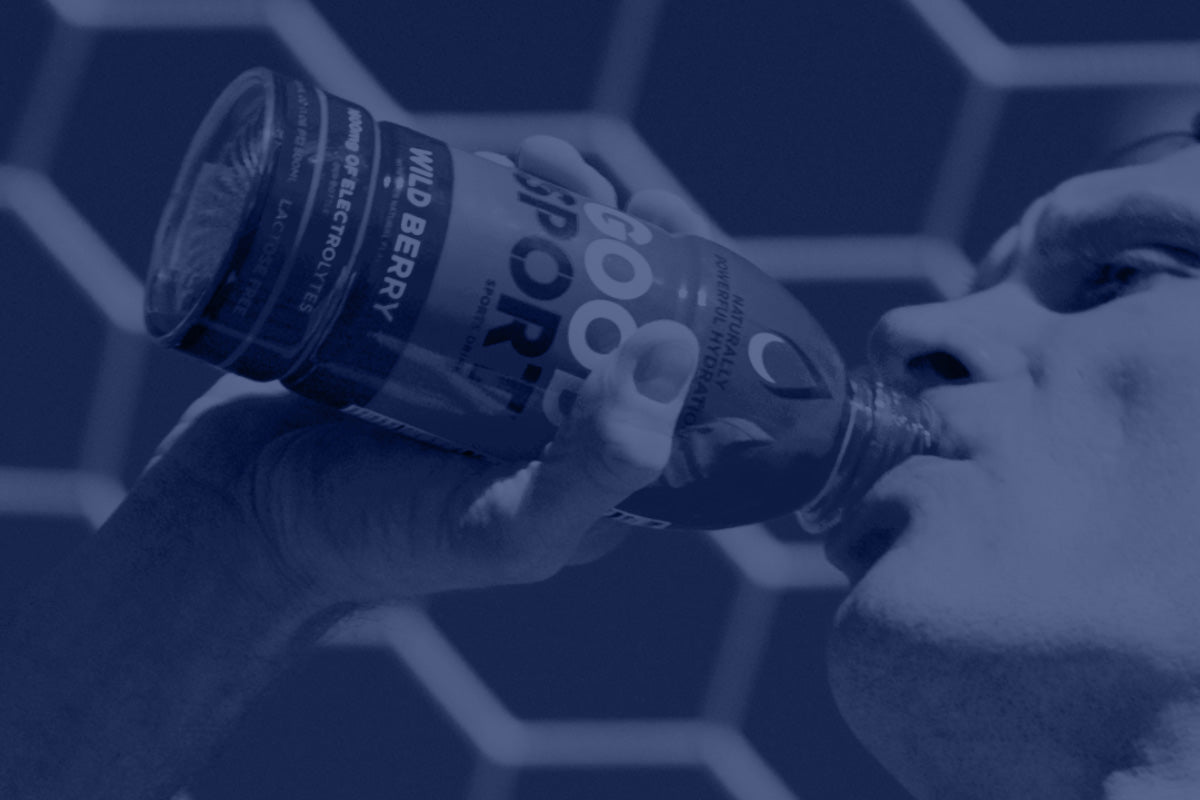
FOCUS ON FLUID
Meeting Daily Fluid Intake Recommendations
Knowing how to properly hydrate is important to overall health and to protect everyday physical and mental performance. It’s also important to be well hydrated prior to beginning any intense activity, so consuming ample fluids during the day (not just during training) should be a constant goal.
Current daily fluid intake recommendations in the U.S. are for females to consume 2.7 liters (2.9 quarts) each day and males to consume 3.7 liters (3.9 quarts) each day.
These recommended values are median values from survey data, not strict guidelines. Daily fluid needs may vary widely among people. Body size, environmental conditions, activity level, and sweat loss combine to dictate daily fluid requirements and fluctuate from day to day.
Thirst is not a major driver of fluid consumption during a typical day, so don’t wait until you are thirsty to start drinking. It’s best to create a plan with your daily fluid intake recommendations in mind to ensure you properly hydrate throughout the day. Most fluid consumed during the day occurs as a result of spontaneous drinking during meals, meetings, and social gatherings. Make a plan to have a water bottle, glass of water or other convenient option available so you can make it a point to drink throughout the day, not just at meal time. One favorite trick - leave an insulated stainless steel water bottle with ice cold water in the car - you won’t believe how well it works to make sure you get in enough fluids!
To reduce the risk of day-to-day dehydration, it is helpful to gauge hydration status, That can be accomplished in a handful of simple ways.
- Keep an eye on the color of urine; urine color should be lighter and look more like lemonade than apple juice. If it is on the darker side, it’s indicative of dehydration -drink more.
- Count the number of bathroom-stops each day after the first void. There should be a minimum of 5 per day for children, 7 for adults.
- If upon awakening, thirst is present, urine is dark, and body weight is lower than the day before, dehydration is likely. Start your day with a nice big drink.
- Institute of Medicine. Dietary Reference Intakes for Water, Potassium, Sodium, Chloride, and Sulfate. National Academies Press; 2005. https://nap.nationalacademies.org/read/10925/chapter/3
- Perrier ET, Armstrong LE, Bottin JH et al. Hydration for health hypothesis: a narrative review of supporting evidence. Eur J Nutr. 2020;60(3):1167-1180.
- Seal AD, Colburn AT, Johnson EC et al. Total water intake guidelines are sufficient for optimal hydration in United States adults. Eur J Nutr. 2023;62(1):221-226.
- Chapelle L, Tassignon B, Rommers N, Mertens E, Mullie P, Clarys P. Pre-exercise hypohydration prevalence in soccer players: a quantitative systematic review. Eur J Sport Sci.2019;20(6):744-755.
- Klimesova I, Krejci J, Botek M, et al. Prevalence of dehydration and the relationship with fluid intake and self-assessment of hydration status in Czech First League soccer players. J Hum Kinetics. 2022;82:101-110.
- Mattausch NR, Domnik K, Koehler K, Schaenzer W, Braun H. Case Study: Hydration intervention improves pre-game hydration status in female collegiate soccer players. Int J Sport Nutr Exerc Metab. 2017;27(5):475-481.
- Adams JD et al. Combining urine color and void number to assess hydration in adults and children. Eur J Clin Nutr. 2021;75(8):1262-1266.
- Barley OR, Chapman DW, Abbiss CR. Reviewing the current methods of assessing hydration in athletes. J Int Soc Sports Nutr. 2020;17(1):1-13.
- Burchfield JM et al. 24-h Void number as an indicator of hydration status. Eur J Clin Nutr. 2015;69(5):638-41.
- Cheuvront SN, Kenefick RW. Am I Drinking enough? Yes, no, and maybe. J Am Coll Nutr. 2016;35(2):185-92.
